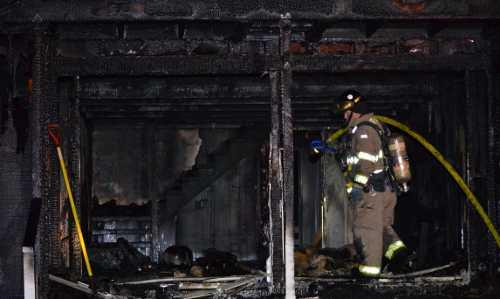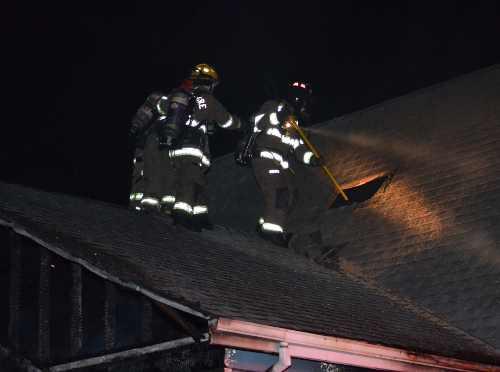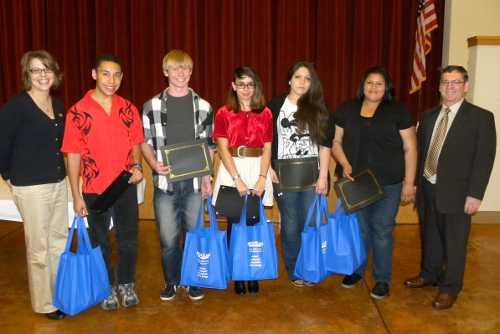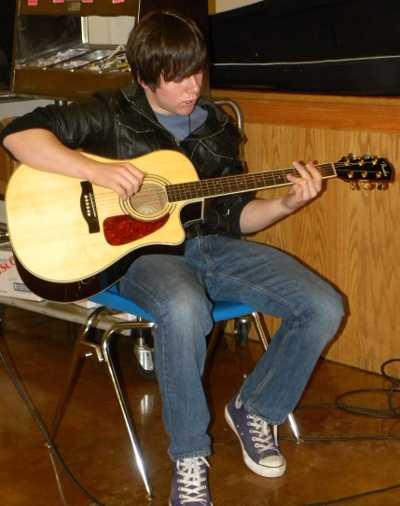LAKEPORT, Calif. – A motion for a mistrial based on allegations of prosecutorial misconduct and a hearing to admit recordings from the crime scene, along with the testimony of a sister and her brother, marked Thursday’s proceedings in the murder trials of two Clearlake Oaks men.
Paul William Braden, 22, and Orlando Joseph Lopez, 24, are on trial for the shooting death on June 18, 2011, of 4-year-old Skyler Rapp and the wounding of five others at a nighttime gathering at the Clearlake home where the child lived with his family.
The day would see Lopez’s defense attorney, Stephen Carter, moving for a mistrial, alleging that District Attorney Don Anderson had impugned his reputation, which he said constituted an ethical breach.
“Defense attorneys have a duty to object whenever they believe prosecutorial misconduct has been committed in front of a jury,” Carter told Lake County News.
By the time testimony began on Thursday morning – just after 10:30 a.m. – visiting Yolo County Judge Doris Shockley already had spent an hour hearing arguments over District Attorney Don Anderson's motion to admit recordings from the crime scene.
Carter and Braden’s attorney Doug Rhoades objected to admitting the recording on the basis of its actual evidentiary value, as well as its potential to prejudice the jury.
“Its prejudicial value is very, very high,” Rhoades said, noting it was “strictly an emotional tug.”
Carter added his own concerns about the use of the court’s time and needing jurors to be able to make unbiased, calm decisions.
Anderson said the tapes showed the chaos and confusion at the shooting scene, and it went to the ability of witnesses to perceive what was taking place in the situation.
He also commented that the defense attorneys were badgering witnesses, a remark that would become a bigger issue later. Carter objected immediately, saying he took umbrage at being called a “badgerer.”
Shockley compared the tapes to autopsy photos. Such photos are sometimes admitted in court, she explained, “but there are limits because the court recognizes that those photos have the kind of effect that can be prejudicial” in the sense that the emotional reaction to them can take over a person's perceptions.
“At this point I'm not going to allow it to be played,” Shockley said of the crime scene recording.
Before the jury was brought in, Rhoades – in response to statements by witness Andrew Sparks who testified last week to seeing moonlight – submitted a stipulation to the court that on the night of the shooting the moon had risen at 10:53 p.m., and was 92.2 percent full, with clear conditions. That time would have been just minutes after the shooting started.
Rhoades also brought to the court's attention a vehicle associated with Desiree Kirby that had been parked in front of the courthouse last week.
The vehicle had a large window sticker with a cartoon figure resembling Calvin from the “Calvin and Hobbes” comic strip urinating on the names “Stone, Braden and Lopez.” Stone refers to Kevin Stone, who originally had been charged with murder but who since has reached a plea agreement to lesser charges with the District Attorney's Office.
Carter, who mentioned that witnesses in the case have been on Facebook sporting t-shirts with similar slogans, asked the judge if she could remind the jury to ignore such signs and placards. Shockley said she should be able to articulate such a reminder to jurors, but she wanted case authority from the attorneys on how to address the issue.
Witness recalls day of shooting
Twenty-year-old Amanda Gamble, Ross Sparks' first cousin, was the day's first witness.
She said she often spent time with Sparks and Kirby at their Lakeshore Drive home, helping care for Skyler and his baby sister.
Gamble's younger brother, Josh, had been in a fight with Dennis Fry and several subjects identified as members of the “Avenue Boyz” group about a week and a half before the shooting, an incident which Anderson has argued laid the groundwork for the fatal confrontation.
The Wednesday before the shooting – which occurred on a Saturday night – Amanda Gamble and Desiree Kirby were at the Clearlake Walmart to purchase a swamp cooler when Gamble spotted Fry and Leonardo Lopez, Orlando Lopez's younger brother, and pointed them out to Kirby.
Gamble said Kirby and the two men got into a five-minute shouting match before the men left and Walmart staff asked Kirby and Gamble to leave.
The night before the shooting, Gamble had stayed over at Sparks' and Kirby's home. On June 18, 2011, everyone got up late, around 11 a.m., went to have pizza and then attended a birthday party for a young cousin. On that afternoon at around 2:30 p.m. Sparks was texting and talking on his cell phone.
“He seemed kinda irritated,” she said of Sparks.
Later that evening about a dozen people came over to the couple's home, Gamble said. She bathed the children and dressed them for bed, went to Safeway to get ingredients for s'mores and they sat and roasted marshmallows.
Gamble was sitting in a chair near the barbecue, with Skyler standing nearby roasting marshmallows when the shooting started. She said she couldn't tell where the shots were coming from or who was shooting.
She said of Skyler, “He just stood there with a white face and stared at me,” and then a few seconds later he fell to the ground.
Over about a three-minute period there were six to seven shots, said Gamble. After Skyler fell, she ran toward a Camaro where her brother, Ian Griffith and Joey Armijo had been. She said her brother shoved her to the ground to keep her from being shot. She then got up and ran around behind the apartment, where she reached into her pocket, grabbed her cell phone and called 911.
When the shooting stopped, she went back into the apartment. Kirby was lying in the doorway, covered with blood. Griffith was on the floor holding his leg, and Armijo was leaning against the bed, sitting calmly and not moving. Gamble said she picked up Kirby's baby daughter and held her.
Skyler was lying outside. Gamble saw blood coming from behind the child's head and underneath his arms. He wasn't breathing, his lips were blue and his face was white.
Carter asked if Gamble believed Fry and Leonardo Lopez were Avenue Boyz. She said yes, noting she had seen them wearing the color red – said to be the group's color – on numerous occasions before the shooting. She said she hadn't seen any of them since the shooting last June.
Alleging misconduct
It was during Carter’s cross-examination of Gamble that Anderson raised an objection, stating that Carter was being “artful” in trying to get around a hearsay issue.
Carter immediately objected, accusing Anderson of prosecutorial misconduct for abusing a defense attorney and calling for a hearing outside of the hearing of the jury.
At that point, with just an hour of testimony having taken place, Shockley excused the jurors for an early lunch so she could hold a hearing on the matter.
Once the jury had been excused, Carter called for a mistrial based on Anderson's comments, alleging that the district attorney had attacked his integrity.
“This is not the first time that he has impugned my integrity today,” said Carter, referring back to Anderson's comments about the defense attorneys “badgering” witnesses.
Shockley asked the court reporter to get her a transcript of Anderson's comment and a hearing on the mistrial motion was set for 4 p.m. Thursday, April 12.
In the meantime, Shockley said the trial needed to move forward. “If we don't move along we're in danger of losing more jurors,” she said, explaining that several of the jurors have other commitments, and the court had told them the trial would end by the first week of May. A week already has been lost due to illness.
Shockley also told the attorneys she had noticed a propensity for “gratuitous comments.”
She added, “Gratuitous comments by any attorney are inappropriate. Keep that in mind.”
Shockley said it's also helpful to have a thick skin.
Testimony resumes briefly
Gamble finished her testimony after the lunch break, answering questions about Avenue Boyz members she knew and saying he didn’t recall anyone at the gathering at Sparks’ and Kirby’s home displaying anger that night.
While she was handing Skyler a marshmallow the gunfire started, and she said her finger was grazed by that first shot.
She was followed to the stand by her brother Josh Gamble, 17, who said he went to Sparks’ home on a daily basis. “It was always boring at my house and he always had a lot of stuff to do over at his.”
He said he hadn’t known Braden or Lopez, although his sister had once dated Lopez’s brother, Leonardo. It was Leonardo Lopez, according to Gamble, who hit him in the head with a lead pipe during a fight with Avenue Boyz members at an adult school graduation at Lower Lake High School about a week and a half before the shooting.
During the gathering on June 18, 2011, Gamble remembered Sparks yelling while on the phone.
He said he paused when the gunfire started.
After that, “I watched my 4-year-old cousin drop,” he said, choking up and wiping his eyes with a tissue handed to him by Anderson.
Anderson showed Gamble a picture of the fence that separated the yard where the gathering was taking place and a neighbor’s yard.
The fence was missing a board, and it was from there that Gamble said he saw a shadowy figure leaning halfway through the fence and firing. He said he saw one or two muzzle flashes.
Shockley dismissed the jurors for the day at around 3:15 p.m. With Friday being a court furlough day, testimony will resume on Wednesday, April 11.
Email Elizabeth Larson at This email address is being protected from spambots. You need JavaScript enabled to view it. .
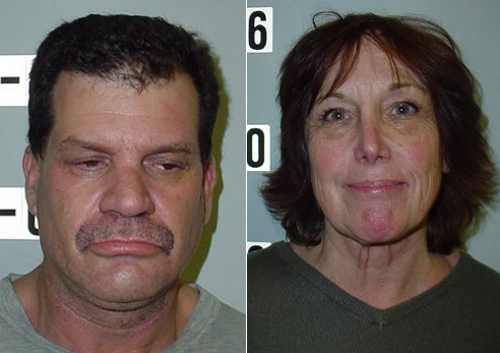
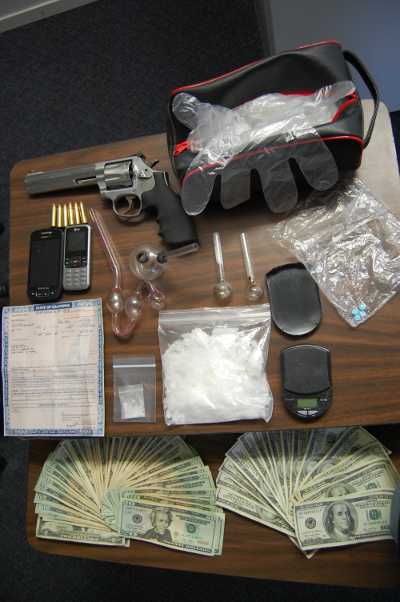

 How to resolve AdBlock issue?
How to resolve AdBlock issue? 
